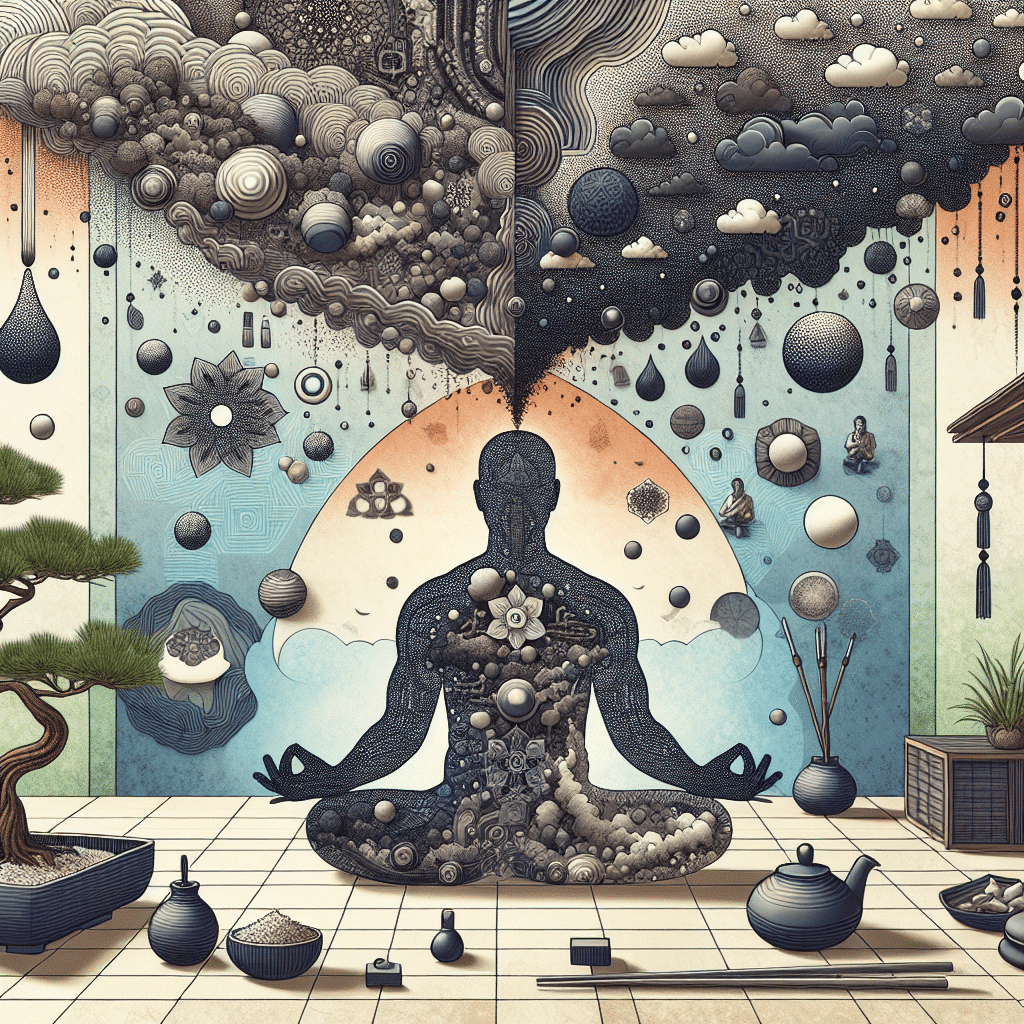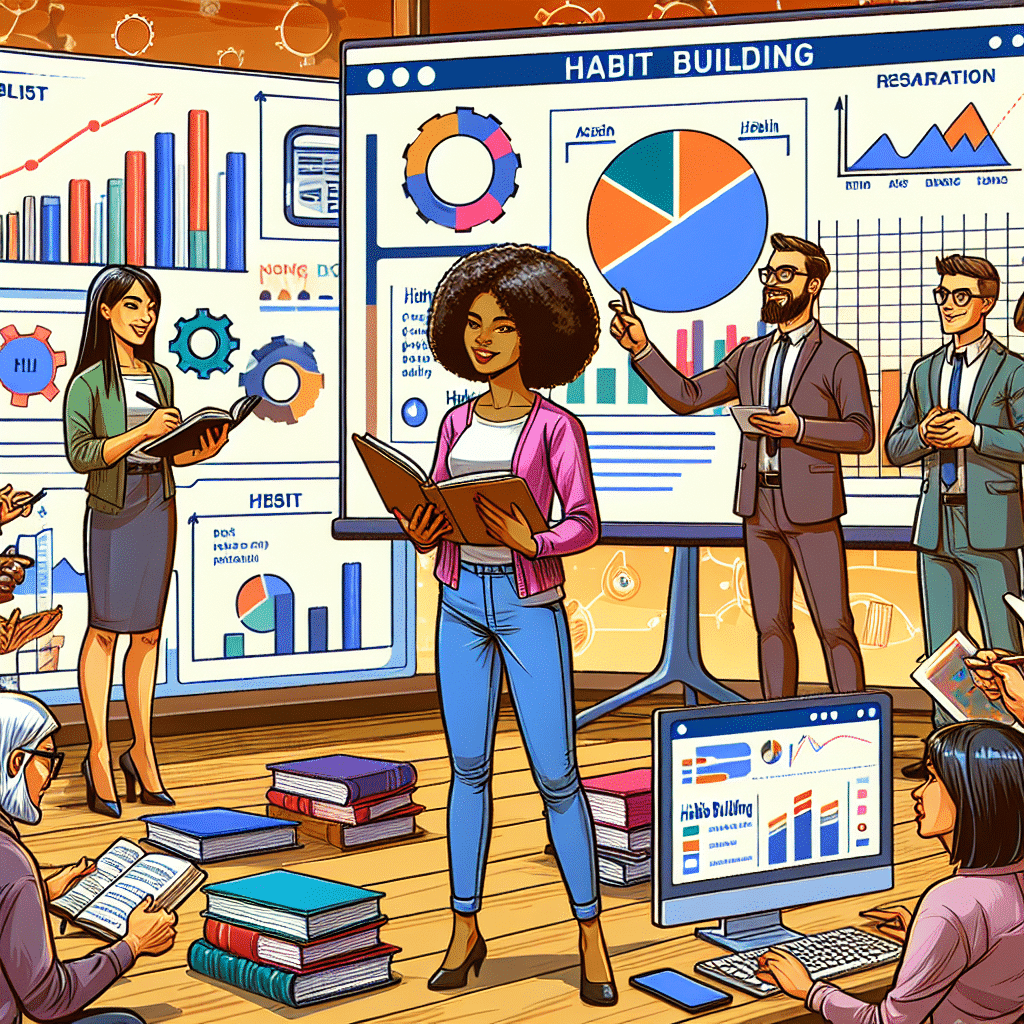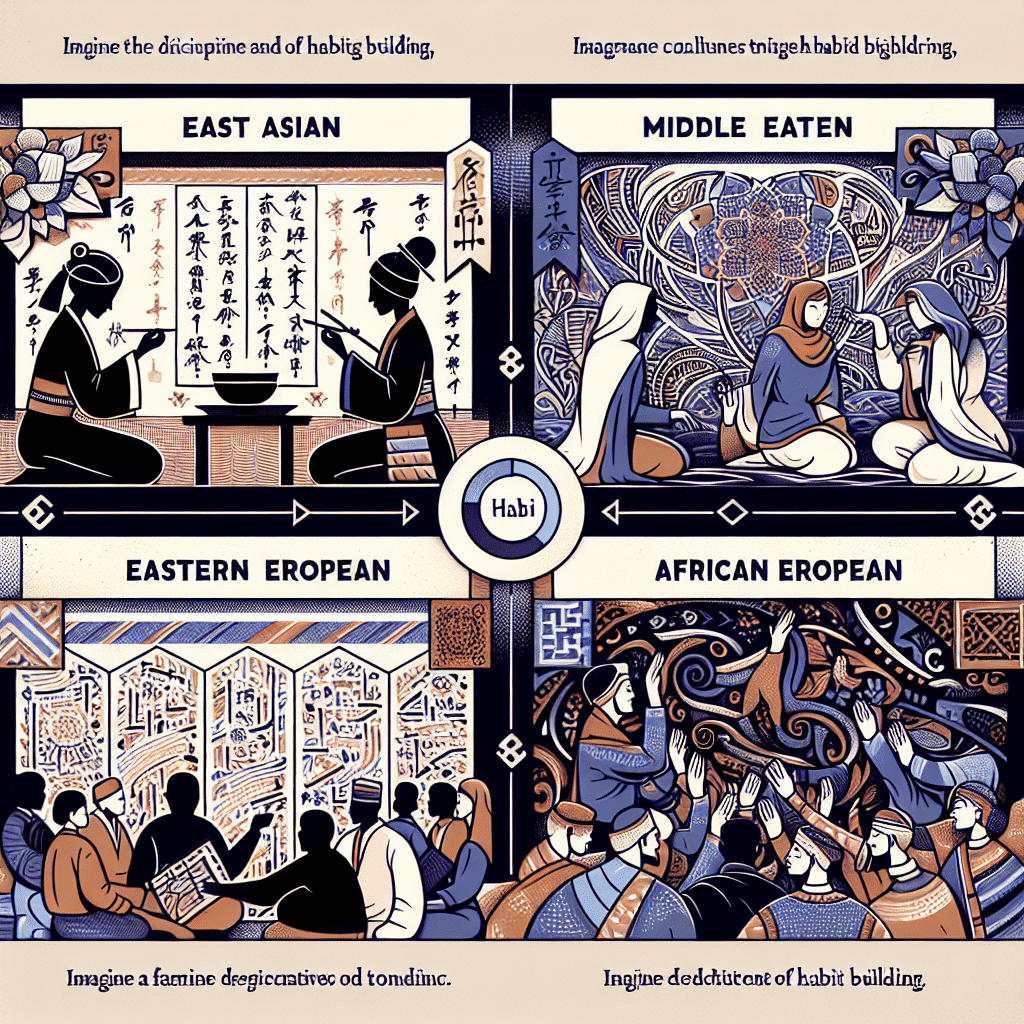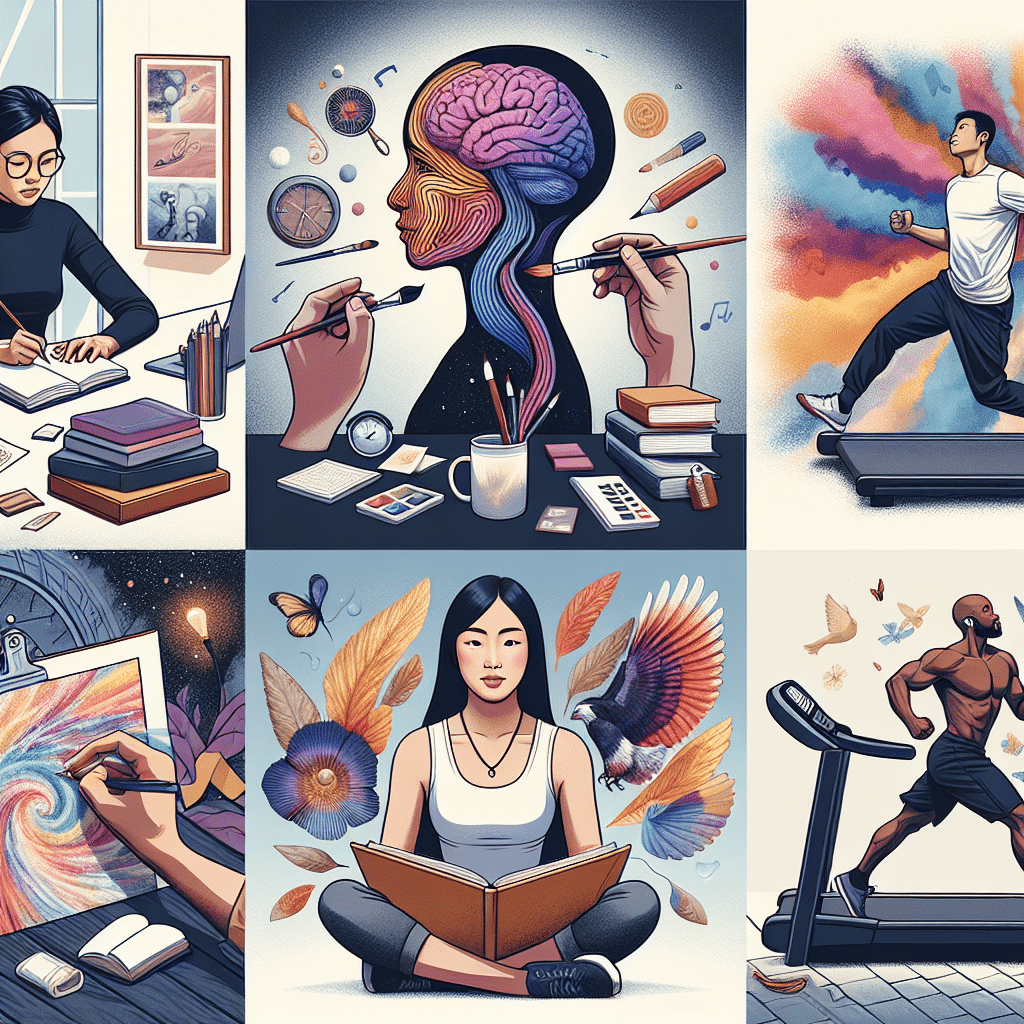
Analyzing Creativity
Welcome to our analysis of creativity! Creativity is a fascinating aspect of human intelligence that can bring forth innovative ideas, artistic expressions, and unique problem-solving abilities. In this article, we will delve into the concept of creativity, explore the factors that influence it, discuss the benefits of nurturing creativity, and introduce various techniques for enhancing one’s creative thinking. Additionally, we will examine how creativity can be applied to different areas of life, whether it’s in the arts, business, or personal development. Let’s explore the depths of creativity together!
Factors that Influence Creativity
Understanding the factors that influence creativity is essential for anyone seeking to enhance and analyze creative processes. While creativity is often seen as a mysterious and intangible concept, research has identified several key factors that contribute to the development and expression of creative ideas.
1. Environment
The environment plays a significant role in fostering creativity. A supportive and encouraging environment can provide individuals with the freedom to explore and take risks, which are essential elements of the creative process. A physical space that is open, well-lit, and filled with resources can inspire and stimulate innovative thinking. Additionally, a positive social environment that encourages collaboration and diverse perspectives can further enhance creativity.
2. Knowledge and Expertise
Having a strong foundation of knowledge and expertise in a particular field is crucial for generating creative ideas. Deep knowledge allows individuals to identify patterns, connect different concepts, and think beyond conventional boundaries. The more one knows and understands about a subject, the more likely they are to come up with unique and innovative ideas within that domain.
3. Mindset
An open and flexible mindset is another important factor that influences creativity. Having a curious and inquisitive mindset allows individuals to challenge assumptions, explore different perspectives, and embrace ambiguity. A growth mindset, which believes that abilities and intelligence can be developed through hard work and dedication, is particularly conducive to the creative process.
4. Emotional State
Emotions play a significant role in creativity. Positive emotions, such as joy and excitement, can broaden one’s thinking and increase their ability to make novel connections. On the other hand, negative emotions, such as fear and anxiety, can inhibit creativity. Managing and regulating emotions is crucial for maintaining an optimal state for creative thinking.
5. Cultural and Social Influences
Cultural and social factors also contribute to creativity. Different cultures may value certain forms of creativity over others, and societal norms and expectations can shape an individual’s creative expression. Exposure to diverse cultural perspectives can broaden one’s understanding and inspire new and innovative ideas.
By considering these key factors, individuals and organizations can better understand and analyze the creativity process. Recognizing these influences can help create an environment that nurtures and enhances creativity, leading to more innovative ideas and solutions.
Benefits of Nurturing Creativity
Nurturing creativity can have numerous benefits, both personally and professionally. Here are some of the key advantages:
1. Problem-solving abilities
Creativity enhances problem-solving abilities as it allows individuals to think outside the box and approach challenges from different angles. In a world that is constantly evolving and facing new problems, being able to think creatively can be a valuable asset.
2. Innovation and originality
Creative individuals often come up with innovative and original ideas, which can lead to breakthroughs in various fields. For businesses, fostering creativity among employees can result in the development of innovative products, services, or processes, giving them a competitive edge in the market.
3. Enhanced self-expression
Nurturing creativity allows individuals to express themselves in unique and meaningful ways. Whether it’s through art, music, writing, or any other form of creative expression, it provides an outlet for emotions, thoughts, and ideas that may be difficult to express otherwise.
4. Increased confidence
When individuals are encouraged to be creative and their ideas are valued, it boosts their self-confidence. They feel empowered to take risks, explore new possibilities, and trust their instincts. This confidence can extend to all areas of life, leading to personal growth and development.
5. Stress reduction
Creative activities have been found to reduce stress and promote relaxation. Engaging in creative pursuits such as painting, crafting, or playing an instrument can provide a sense of calm and mindfulness. It allows individuals to focus their attention on the task at hand, providing a temporary escape from daily worries and concerns.
6. Improved communication skills
Creativity often involves effectively communicating ideas and concepts to others. As individuals develop their creative abilities, they also enhance their communication skills, allowing them to convey complex ideas in a clear and concise manner. This can be advantageous in personal relationships, professional settings, and even in social interactions.
7. Personal fulfillment and happiness
Engaging in creative activities and nurturing creativity can bring a sense of fulfillment and happiness. It allows individuals to tap into their unique skills, interests, and passions, leading to a sense of purpose and satisfaction. Whether it’s pursuing a creative hobby or finding a career that aligns with one’s creative abilities, it can contribute to overall well-being and happiness.
In summary, nurturing creativity can have a profound impact on various aspects of life. Whether it’s enhancing problem-solving abilities, fostering innovation, reducing stress, or bringing personal fulfillment, investing in creativity is a worthwhile endeavor.

Techniques for Enhancing Creativity
Enhancing creativity is essential for individuals and organizations looking to stay ahead in today’s rapidly changing and competitive world. By implementing specific techniques, one can unlock their creative potential and foster innovation. Here are some effective techniques for enhancing creativity:
1. Embrace a Growth Mindset
A growth mindset is the belief that abilities and intelligence can be developed through dedication and hard work. By adopting a growth mindset, individuals are more likely to take risks, embrace challenges, and persevere in the face of setbacks – all of which are key drivers of creativity. Embracing a growth mindset encourages continuous learning and opens up new possibilities for creative thinking.
2. Engage in Divergent Thinking
Divergent thinking involves generating multiple solutions or ideas without strict limitations or judgment. It allows for unconventional and out-of-the-box thinking, which often leads to creative breakthroughs. Engaging in activities such as brainstorming sessions or mind mapping exercises can stimulate divergent thinking and foster the generation of fresh, innovative ideas.
3. Create a Stimulating Environment
The physical environment can have a significant impact on creativity. Creating a space that is visually stimulating, comfortable, and free from distractions can enhance the creative process. This can include incorporating inspiring artwork, providing flexible work areas, and encouraging interaction and collaboration among team members.
4. Practice Mindfulness and Meditation
Mindfulness and meditation practices can help calm the mind, reduce stress, and improve focus – all of which are essential for creative thinking. By cultivating a mindful mindset, individuals can become more attuned to their thoughts, emotions, and surroundings, enabling them to tap into their creative potential more effectively.
5. Seek Diverse Perspectives
Collaboration and seeking diverse perspectives are valuable in expanding and enhancing creative thinking. By engaging with individuals from different backgrounds, experiences, and fields, one can gain fresh insights, challenge their own assumptions, and spark new ideas. This can be achieved through networking events, cross-functional teams, or seeking feedback from a diverse group of individuals.
6. Use Creative Problem-Solving Techniques
Employing specific creative problem-solving techniques, such as brainstorming, mind mapping, or SCAMPER (Substitute, Combine, Adapt, Modify, Put to another use, Eliminate, Reverse), can help break through mental barriers and generate innovative solutions to challenges. These techniques encourage thinking outside the box and enable individuals to approach problems from different angles.
By incorporating these techniques into daily routines and practices, individuals can enhance their creativity and unlock their full innovation potential. Remember, creativity is not a fixed trait but a skill that can be developed and nurtured over time. Embracing a growth mindset, creating a stimulating environment, and practicing mindfulness are just a few ways to cultivate creativity and drive innovative thinking in any area of life or work.
Applying Creativity to Different Areas
Creativity is not limited to any specific field or industry. In fact, it can be applied to various areas of life to bring about innovation and positive change. Here are some examples of how creativity can be utilized in different domains:
1. Business
In the business world, creativity plays a crucial role in driving innovation and finding new solutions to problems. It can help businesses develop unique products or services, improve processes, and foster a culture of innovation within the organization. Creative thinking can also be applied to marketing and advertising strategies, allowing companies to stand out from their competitors and attract a larger customer base.
2. Education
Creativity is essential in the field of education as it encourages students to think critically, solve problems, and express themselves. Incorporating creative elements into lesson plans and classroom activities can make learning more engaging and enjoyable for students. Teachers can encourage creativity by allowing students to explore different perspectives, think outside the box, and use their imagination to come up with innovative solutions.
3. Arts and Media
In the arts and media industry, creativity is at the core of all artistic expressions. Whether it’s in painting, music, film, or writing, creativity allows individuals to express their unique perspectives and emotions. Artists and media professionals rely on their creative abilities to captivate audiences, evoke emotions, and create impactful experiences. Creative thinking is also important in media planning and design, where innovative ideas can lead to visually appealing and engaging content.
4. Science and Technology
Creativity plays a vital role in driving breakthroughs and advancements in the field of science and technology. Scientists and researchers often need to think creatively to come up with new hypotheses, experimental designs, and solutions to complex problems. In the technology sector, creative thinking can lead to the development of innovative products, applications, and software solutions that improve people’s lives and simplify their everyday tasks.
5. Personal Development
Applying creativity to personal development can lead to self-discovery, new ideas, and personal growth. Engaging in creative activities such as writing, painting, or playing a musical instrument can enhance self-expression, boost confidence, and provide a platform for exploring one’s thoughts and emotions. Creative problem-solving and thinking outside the box can also be applied to personal challenges and decision-making processes.
Overall, creativity is a valuable asset that can be applied to a wide range of areas in our personal and professional lives. By nurturing creativity, exploring new ideas, and embracing innovative approaches, we can unlock our full potential and make a positive impact in various domains.

Summary
Understanding and analyzing creativity is crucial in unleashing innovative ideas and solutions. Factors such as environment, mindset, and culture play a significant role in influencing creativity. Nurturing creativity has numerous benefits, from fostering innovation to enhancing problem-solving abilities. Techniques like brainstorming, mind mapping, and embracing ambiguity can enhance creativity. The application of creativity spans across various areas, from art and design to business and scientific research. Analyzing creativity serves as a foundation for unlocking limitless possibilities and driving progress in diverse fields.






